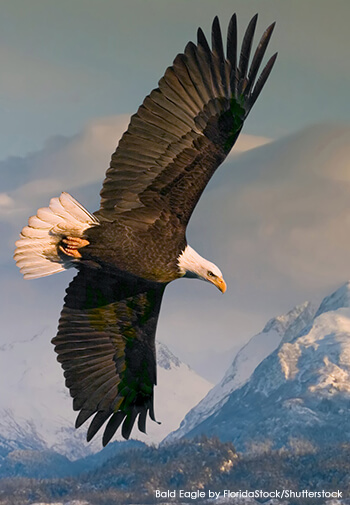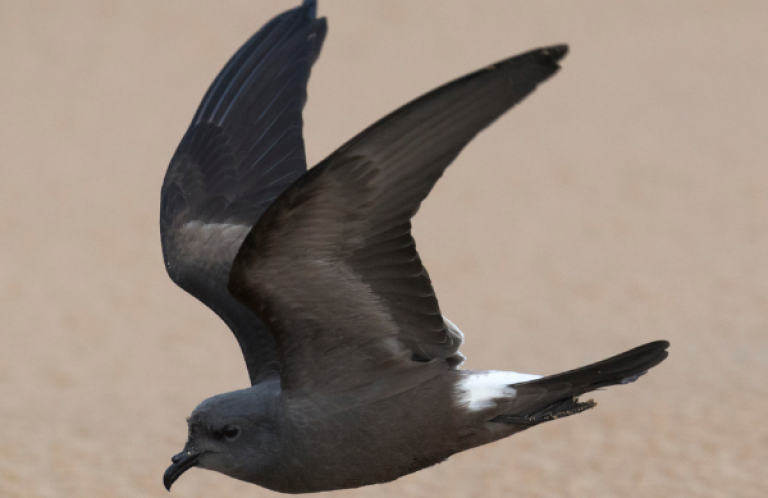American Bird Conservancy Sues Feds Over 30-Year Eagle Kill Rule
 |
(Washington, D.C., June 19, 2014) Today, American Bird Conservancy (ABC) filed suit in federal court against the Department of the Interior (DOI), charging DOI with multiple violations of federal law in connection with its December 9, 2013, final regulation that allows wind energy companies and others to obtain 30-year permits to kill eagles without prosecution by the federal government.
ABC sent DOI and its U.S. Fish and Wildlife Service (FWS) an April 30, 2014, Notice of Intent to Sue that cited DOI violations of the National Environmental Policy Act (NEPA), the Bald and Golden Eagle Protection Act (BGEPA), and other statutes in connection with the new eagle kill rule. ABC is being represented by the Washington, D.C. public interest law firm of Meyer Glitzenstein & Crystal.
“Eagles are among our nation's most iconic and cherished birds. They do not have to be sacrificed for the next 30 years for the sake of unconstrained wind energy,” said Dr. Michael Hutchins, National Coordinator of ABC's Bird Smart Wind Energy Program. “Giving wind companies a 30-year pass to kill Bald and Golden Eagles without knowing how it might affect their populations is a reckless and irresponsible gamble that millions of Americans are unwilling to take.”
The previous rule, adopted in 2009, provided for a maximum duration of five years for each permit to kill eagles. According to a statement issued at that time by FWS in the Federal Register, a permit of any longer duration “would be incompatible with the preservation of the Bald or Golden Eagle.” Yet just four years later DOI has increased by six-fold the time during which eagles could be killed, without offering a strong scientific justification for this change. ABC is initiating the legal action in order to have the rule invalidated pending full compliance with federal environmental statutes.
ABC believes wind energy and other renewable energy sources can be encouraged without putting Bald and Golden Eagles at risk. “In the government's rush to expand wind energy, shortcuts were taken in implementing this rule that should not have been allowed,” said Hutchins. “We understand that some bird mortality is inevitable. However, in this case, long-term, cumulative impacts to eagle populations were not properly assessed, and the 30-year take permit rule was adopted in the absence of the required NEPA analysis concerning impacts on eagle populations or any other species that share the eagles' range.”
“The recovery of Bald Eagle populations is an FWS success story—an example of how a species' population, with enough time and resources, can be brought around,” continued Hutchins. “Americans take pride in the fact that Bald Eagles are once again a common sight in many places across the country. Their popularity and symbolic importance suggests that the American people are not going to tolerate the deaths of many to wind turbines.”
“The U.S. Fish and Wildlife Service is one of ABC's most important partners,” said ABC President George Fenwick. “We collaborate frequently, share many goals, and have enjoyed many successes together. Unfortunately, our previous entreaties that the government slow its headlong rush on 30-year eagle take permits were ignored. We issue this lawsuit as a last resort and we hope it will lead to an approach that better balances the compelling national interests in eagle conservation with the expansion of wind power.”
Fenwick continued, “If government agencies are allowed to ignore their own rules, we have a dangerous precedent that should be of great concern to anyone who cares about wildlife in this country.”
In 2009, 22,000 wind turbines were in operation in the United States, representing 25 gigawatts (GW) of installed capacity—a small fraction of the 300GW of production capacity needed to meet the 2030 federal goal of generating 20 percent of U.S. electricity from renewable energy.
By 2030, wind energy project growth is expected to impact almost 20,000 square miles of terrestrial habitat (an area larger than the combined areas of New Jersey, Connecticut, Delaware, and Rhode Island) and more than 4,000 square miles of marine habitat, some of this critical to threatened and other protected species.
ABC's efforts to establish Bird Smart wind energy in the U.S. are made possible in part by the generous support of the Leon Levy Foundation.


















































